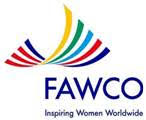Because of the start of the Covid-19 crisis, only two members were present to discuss this book, and neither was the person who had recommended it, so there was no presentation or background information about the author, other than to note that she is part Native American (her mother was half Ojibwe and half “a mixture of other tribes plus French”), and was married to the author Michael Dorris, who wrote A Yellow Raft in Blue Water, which we read in February 2015. Most of her books feature Native American characters and settings. In 2012 she received the National Book Award for Fiction for The Round House. In case anyone is wondering, Chippewa and Obijwe are alternative spellings for the same Native American tribe.
KatharineJ had recommended the book, but was not able to attend the meeting, so she prepared some questions in advance. The first was, “What are your thoughts about the main characters, and do you have a favorite?” One of us said her favorite was the father, who was a tribal judge, but we both had trouble remembering his name. We even spent a bit of time leafing through the book before we found it – on page 4 Joe says, “I am the second Antone Bazil Coutts,” but he prefers to be called Joe, and his father, when his name appears, is called Bazil. We disagreed about the priest, Father Travis. One of us liked him, but the other felt he was too harsh, and too un-priestlike, not really believable. We both felt sympathy for Joe, the 13-year old Native American narrator of the story, who felt that he had to take on the responsibility of identifying his mother’s attacker. One said she liked “being in Joe’s head,” and she particularly likes books written in the first person. She also said it was hard to have an opinion about the mother, Geraldine.
We noted that there are a LOT of characters, and we tried to list them, and that led us to Katharine’s second question, “What do you think the book reveals about mother/son/husband/wife relationships, and other family/tribal ones?” We remarked that tribal relationships are often much stronger than non-tribal, but we felt the book did not reveal much about relationships because this was such a specific situation. Many of the book’s characters are related. Joe’s grandfather Mooshum makes several appearances (often to relate folklore), and there’s a Grandma Ignatia and a Grandma Thunder, but no delving into relationships. Joe’s uncle Whitey is very present, his uncle Edward, less so. Aunt Clemence is also very much in the picture, and even more so is Uncle Whitey’s buxom partner, Sonja, a former stripper and prostitute who works the cash register in Uncle Whitey’s gas station shop and plays an important part in Joe’s imagination, and eventually in his life as well, since he goes to her for solace after his mother is attacked and hospitalized. So there are dreams of a relationship… We felt Sonja was a disappointment when she stole the money, but perhaps we should have seen it coming. Joe has three special friends (Cappy, Zack, and Angus), and members of their sometimes dysfunctional families (Doe and Randall Lafournais) also play parts in the story. We both liked Joe’s best friend, Cappy, who appears solid and dependable, although it’s Cappy who teaches Joe how to shoot a gun, and who takes over when Joe can’t follow through. We remarked that the story never specifically reveals what happened to Mayla, to whom we referred as “the girl with the baby,” but who is, in fact, a key to unraveling the mystery of the attack on Joe’s mother. Joe deduces that Mayla was buried, but it’s a shame that he didn’t tell anyone his intuition that she was buried at the construction site. We remembered that there is a crazy guy wandering (or cycling) around muttering to himself – so many little puzzle pieces that didn’t want to come together. There are plenty of other relationships. The non-Native and truly dysfunctional Lark family, twins Linden and handicapped Linda, and their already deceased mother Grace, who gave Linda away (to a woman on the reservation) because of her physical deformity. Linden and Mayla, then Mayla and the governor, and the baby, and the money to silence Mayla. The young people at the church camp, and the catastrophic result, during the road trip, of a relationship that developed there. Sometimes it was difficult to remember who was who, except for the main characters, and it was difficult to decipher those characters’ relationships because of the abnormal situation. As to the road trip, we felt it was somewhat bizarre in terms of the rest of the story, and a strange way for the storyline to end.
Katharine’s third question was, “Religious beliefs, myth, superstition, traditions play an important role. What are your thoughts about these issues?” One of us admitted to being superstitious, and said she loves tradition. The other said she doesn’t like traditions that are observed blindly. She quoted from page 214, “even though you become a fool, people will in time consider you a wise man.”
The fourth question was, “What does this book have to say about women’s role, rights/rape/justice?” We didn’t find much that was positive about women’s rights or justice. We were waiting for a trial which would bring to light all the injustice, but the book doesn’t really show any justice. What it does mention, and perhaps even stress, is the uncharted space between tribal justice and federal law. We also found no explanation of tribal law regarding minors, which we considered to be an important question in such a situation.
The fifth and last question was, “What did you appreciate/dislike about this book?” First person narrative was already mentioned, and one of us particularly liked the tribal connection. Also noted was the richness of the story; there were a lot of things that were not related to the aggression that added to the storyline. In the dislike column, the road trip has already been noted, and to that can be added that there was a lot of “non-dit,” too many things not said. There were not enough replies to Joe’s questions; people didn’t talk honestly to him. But we did like the book, and are grateful to KatharineJ for recommending it.
One member who could not attend sent her notes, but I didn’t receive them in time for the meeting, so am attaching them here (after a bit of editing):
I found this novel very painful to read - almost too painful.
It is the middle of a trilogy of novels about Native Americans - and the author is part-Indian herself and depicts their lives in North Dakota, a community under stress.
“Each book in the cycle explores the reverberations from a single act of violence. "I knew I was working on the subject of justice when I wrote the first book, and then I realized I had to write about jurisdictional issues for the second book," Erdrich told The Rumpus. "I understood that I had to continue this theme [of justice]." But as important, Erdrich told PBS Newshour, is the theme of the "resilience of the culture.””
The writing of the characters in the book was very vivid and deep. And troubling.
The first booking the trilogy is Plague of Doves, the Round House is the second, and the third novel is LaRose.
The characters of Joe’s parents, Judge Bazil Coutts and his wife Geraldine, the clerk of the tribe, feature prominently in the first book.
There are many characters in the book, many of them living troubled lives. I found it difficult to connect with several of them, areas of grayness abound, (except for the villain, Linden - no grayness there).
Also, the issue of tribal law versus US law, meant that Geraldine’s attacker Linden was protected from prosecution - which led to Joe and Cappy planning to avenge Geraldine’s rape by Linden. There is an underlying sense of unfairness when it comes to Native Americans and how they are perceived (wrongly or rightly, often unfairly) by white America.
In Canada, the equivalent people - now called First Nation - are given many federal benefits for life (in acknowledgement of past unfairness I think). This leads to young women having babies who will be protected by those financial benefits.
The book was set in 1988, and is narrated by an adult Joe Coutts (now a tribal Judge himself), but this is a coming-of-age theme as he reflects on his adolescent self, and some of the (clunky) decisions he made, including seeking justice for his mother. Joe was only 13 years old at the time when the events took place. He was just a kid, being a kid, doing kid things.
“As Erdrich explains in an afterword, tribal governments have been prohibited since 1978 from prosecuting non-Natives who commit crimes on their land. That is, until 2013—one year after The Round House was published—when, after several years of being blocked in Congress, the Violence Against Women Act was effectively reauthorized.
"The Justice Department reports that one in three Native women is raped over her lifetime, while other sources report that many Native women are too demoralized to report rape," wrote Erdrich in a 2013 editorial for The New York Times. More than 80 percent of sex crimes on reservations, she added, are committed by non-Native men. With tribal courts unable to prosecute these cases and because "federal prosecutors decline to prosecute 67 percent of sexual abuse cases, according to the Government Accountability Office," she wrote, it has been reported that non-Native habitual sexual predators are particularly attracted to tribal areas. "A growing number of Native American women wear red shawls to powwows to honor survivors of sexual violence. The shawls, a traditional symbol of nurturing, flow toward the earth. The women seem cloaked in blood." Erdrich told BookPage she had wanted to write about this subject for a long time, but didn't know how to approach it. "I didn't want to write a polemical piece. Every time I'd talk about the novel, I'd say it's about jurisdiction and—YAWN, people's eyes would glaze over. I thought, I have to find a way to tell this story that doesn't make them completely lose consciousness." The character of Joe, she told the National Book Foundation, was "a writer's gift." When he "started talking, I knew I had been waiting for him."
I was impressed by the book, by the level of emotion in the writing, and by the story-telling. And it made me think: what is vengeance? what is justice? How does a (tender) 13-year old boy who is close to his mother react to an act of violence against her? Particularly when justice is denied her, her husband and family.
The sense of justice or lack of it is a major theme in American life today. Black Lives Matter.
While I didn’t enjoy reading the book, it made me think
Editor’s note: These comments were sent in March, before the current situation in the US.

